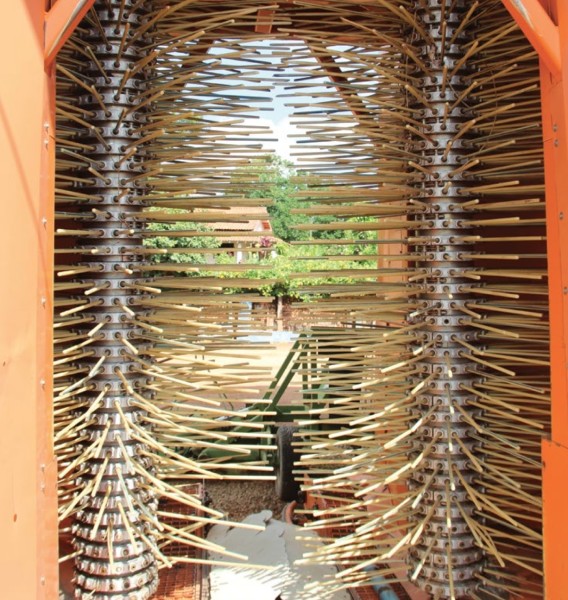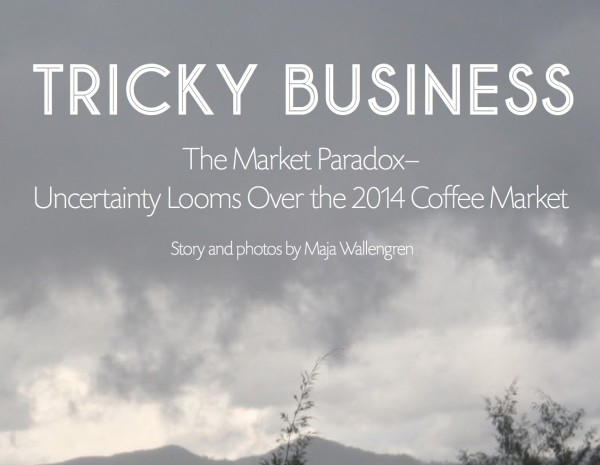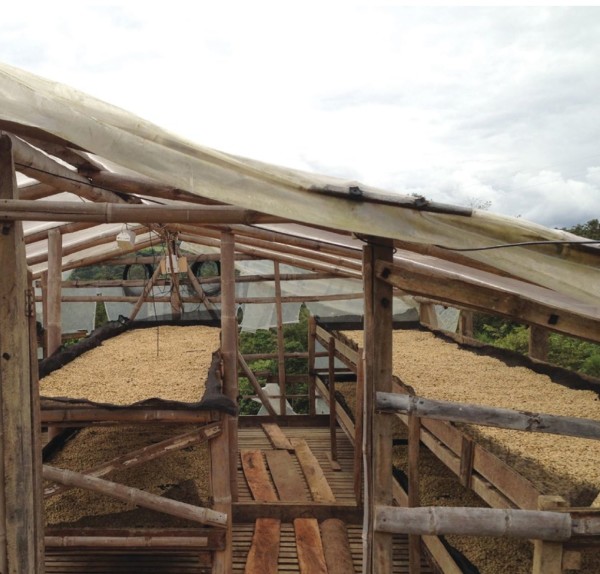The March/April 2014 issue of Roast Magazine is now shipping. If you’re not yet a Roast subscriber, become one here.
Below are previews of three of this issue’s feature stories, including in-depth examinations of the 2014 coffee market, some perspective on mechanized harvesting and quality, and Part 2 on a series on water activity in high-end coffee.
Read. Learn. Enjoy. Subscribe.
Tricky Business
The Market Paradox — Uncertainty Looms Over the 2014 Coffee Market
Story and photos by Maja Wallengren
From the story:
World arabica coffee prices traded at the lowest levels in close to five years for most of the second half of 2013, and though 2014 has begun with a modest rally in prices, there seems to be little to stop the bearish sentiment dominating the market these days.
The overall response seems to agree the market is more than well supplied for now. Even with slow exports out of Vietnam and a potential drop in the next harvest from Brazil, the world’s largest producer, how is it that prices can be so low when the world is experiencing the biggest boom in consumption ever? What’s really going on in producing countries, and what is moving the market in such different directions? As most of the picking of the world’s 2013–14 coffee harvest is coming to an end, the projections and forecasts for the new crop couldn’t be further apart, and, once again, uncertainty looms heavy over the market…
Rise of the Machine
Mechanized Harvesting and Quality
by Joel Shuler with Fabio Moreira da Silva and Sergio Parreiras Pereira

A closeup of the harvesting rods that remove coffee fruit from the tree at Fazenda Capatinge. photo by Joel Shuler
From the story:
Picking coffee is arduous, low-paying work, and when given the option to pick coffee or do something else, generally people will opt to do something else. As third-world countries develop, and the rungs of the socio-economic ladder appear, so too do alternatives to low-paying farm work. This is a good problem that growers in many producing countries now face, and perhaps nowhere is this more evident than in Brazil. As it makes the transition toward first-world status, so too must its coffee industry. Brazilian producers are pioneers, and their successes and failures will pave the way as wages and social mobility increase in other producing countries.
The crux of how Brazil will be able to make this transition lies in technology and in the mechanization of the coffee production process. The following is a look at the current situation in Brazil, an explanation of how mechanization provides necessary efficiencies, and a look at how mechanization impacts coffee quality…
Measuring Water Activity in High-End, Specialty Green Coffee
Part 2 of 2
by Ian Fretheim. Photos courtesy of Café Imports.
From the story:
In the first article, I introduced how water activity could play an integral role in predicting the quality decline of specialty coffee over time. Specifically, I raised the possibility that water activity could be used to predict the relatively subtle decline from high-end specialty to standard specialty grade coffee, i.e. 92-point St. Germaine-like perfume and saturation, to 87 sweet and floral.
One reason for this focus is that we try to acknowledge truly exceptional cup quality in the prices that we pay to producers…
Nick Brown
Nick Brown is the editor of Daily Coffee News by Roast Magazine.








Comment